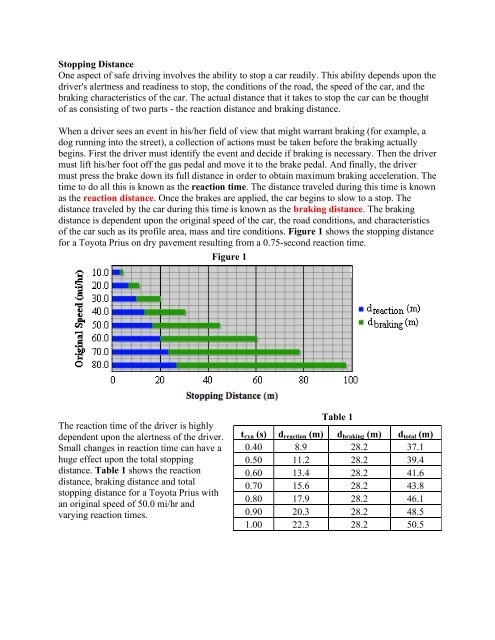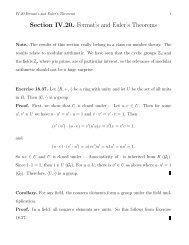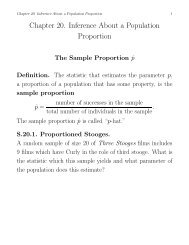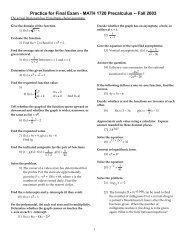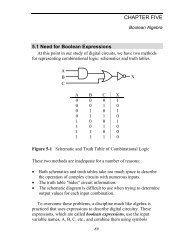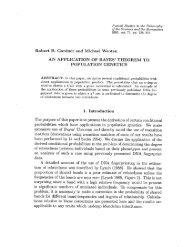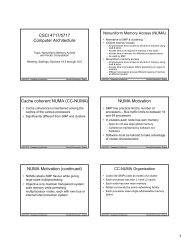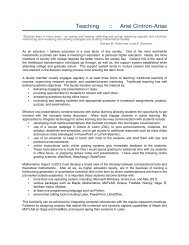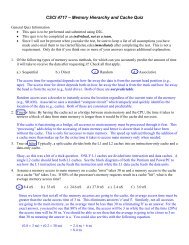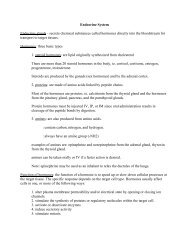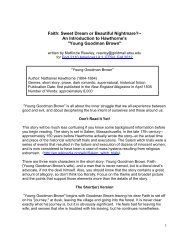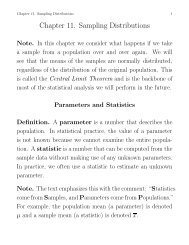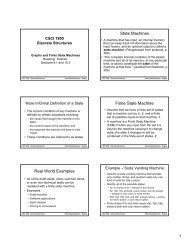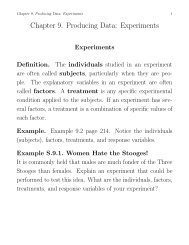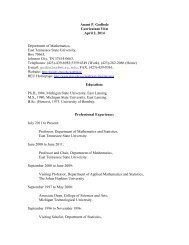View Passage - The Physics Classroom
View Passage - The Physics Classroom
View Passage - The Physics Classroom
Create successful ePaper yourself
Turn your PDF publications into a flip-book with our unique Google optimized e-Paper software.
Stopping DistanceOne aspect of safe driving involves the ability to stop a car readily. This ability depends upon thedriver's alertness and readiness to stop, the conditions of the road, the speed of the car, and thebraking characteristics of the car. <strong>The</strong> actual distance that it takes to stop the car can be thoughtof as consisting of two parts - the reaction distance and braking distance.When a driver sees an event in his/her field of view that might warrant braking (for example, adog running into the street), a collection of actions must be taken before the braking actuallybegins. First the driver must identify the event and decide if braking is necessary. <strong>The</strong>n the drivermust lift his/her foot off the gas pedal and move it to the brake pedal. And finally, the drivermust press the brake down its full distance in order to obtain maximum braking acceleration. <strong>The</strong>time to do all this is known as the reaction time. <strong>The</strong> distance traveled during this time is knownas the reaction distance. Once the brakes are applied, the car begins to slow to a stop. <strong>The</strong>distance traveled by the car during this time is known as the braking distance. <strong>The</strong> brakingdistance is dependent upon the original speed of the car, the road conditions, and characteristicsof the car such as its profile area, mass and tire conditions. Figure 1 shows the stopping distancefor a Toyota Prius on dry pavement resulting from a 0.75-second reaction time.Figure 1<strong>The</strong> reaction time of the driver is highlydependent upon the alertness of the driver.Small changes in reaction time can have ahuge effect upon the total stoppingdistance. Table 1 shows the reactiondistance, braking distance and totalstopping distance for a Toyota Prius withan original speed of 50.0 mi/hr andvarying reaction times.Table 1t rxn (s) d reaction (m) d braking (m) d total (m)0.40 8.9 28.2 37.10.50 11.2 28.2 39.40.60 13.4 28.2 41.60.70 15.6 28.2 43.80.80 17.9 28.2 46.10.90 20.3 28.2 48.51.00 22.3 28.2 50.5
Questions:1. Based on Figure 1, what effect does the doubling of the speed of a car have upon thebraking distance?a. <strong>The</strong> braking distance is doubled.b. <strong>The</strong> braking distance is one-half the value.c. <strong>The</strong> braking distance is not affected by a doubling of speed.d. <strong>The</strong> braking distance is increased by more than a factor of two.2. What is the reaction distance of a Toyota Prius moving at 60.0 mi/hr on dry pavement anddriven by a driver with a 0.75-second reaction time?a. 16.8 meters b. 20.0 metersc. 40.0 meters d. 60.0 meters3. Based on Figure 1, at what car speed does the reaction distance of a car equal the brakingdistance of a car?a. 20.0 mi/hr b. 30.0 mi/hrc. 40.0 mi/hr d. 60.0 mi/hr4. A student is texting while driving a Toyota Prius at 50.0 mi/hr on dry pavement. As a result,the reaction time is 1.5 seconds. Use the data of Table 1 to predict the total stoppingdistance of the student’s car.a. Approximately 33.5 meters b. Approximately 45.0 metersc. Approximately 50.5 meters d. Approximately 61.7 meters5. Which of the following combinations of reaction time and car speed would lead to thegreatest stopping distance?a. Reaction time = 0.90 seconds; car speed = 30 mi/hr.b. Reaction time = 0.75 seconds; car speed = 40 mi/hr.c. Reaction time = 0.90 seconds; car speed = 50 mi/hr.d. Reaction time = 0.70 seconds; car speed = 80 mi/hr.


